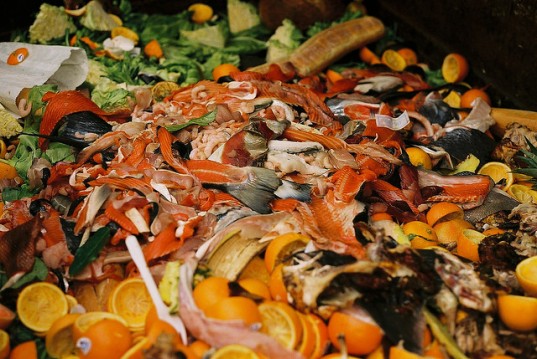Converting everyday rubbish into usable energy once seemed like science fiction, but bioenergy has made it reality. This sustainable solution transforms waste into valuable fuel sources while also benefiting the environment.
Bioenergy provides a profitable way to upcycle discarded items into clean power instead of letting them pile up in landfills. What was once treated as garbage now becomes a source of renewable energy for society’s needs. With bioenergy, there is potential to turn waste into an environmental and economic asset.
Definition of Bioenergy
You might be wondering what exactly is bioenergy? In simple terms, bioenergy is energy derived from organic materials. These materials can range from agricultural residues, forest waste, food scraps or even animal manure. The process of converting these ‘biomass’ resources into bioenergy can take several forms, like burning for heat and power, fermenting for biofuels or subjecting them to anaerobic digestion to generate biogas.
Various Sources of Bioenergy
Nature offers an abundance of sources for generating bioenergy. You have wood pellets and chips from forests, manure from farming activities, crop residues left after harvests and even energy crops grown explicitly for this purpose like switchgrass or miscanthus. The spectrum doesn’t end here though; household waste also qualifies as a potential contributor to this list which you will explore more next.
Understanding Everyday Rubbish
If you were thinking that household rubbish is just useless trash, think again! Household waste consists of food scraps, glass bottles, plastic containers, paper products – stuff that you discard every day. This seemingly insignificant rubbish when recycled correctly can generate appreciable amounts of bioenergy contributing towards sustainable energy practices for society.
Contribution of Rubbish Removals
The company Same Day Rubbish Removals plays a significant part in Melbourne’s waste management ecosystem by providing quick and efficient removal services. They responsibly handle all types of waste – from household junk to electronic waste and green waste which can boost the raw material sources for bioenergy. You can see the services on offer here https://www.samedayrubbishremovalmelbourne.com.au/.
Beyond mere rubbish collection and disposal, they also advocate for proper recycling which aligns perfectly with the ideal principles of bioenergy generation and closing the loop on waste management for a sustainable future.
Importance of Bioenergy
Bioenergy today holds tremendous importance in the roadmap towards carbon neutrality. It serves as a renewable alternative to fossil fuels thus reducing our carbon footprint. Not only for large industries, but it can also be adopted at the community level through bioenergy plants helping cities reduce their reliance on non-renewable energy sources. The end products such as electricity, heat or biofuels have wide applications across sectors.
Role of Everyday Rubbish
Everyday rubbish plays a crucial role in this bioenergy narrative. Home waste when segregated correctly can segregate organic wastes fit for conversion into bioenergy. Post-consumer packaging materials, when recycled, could divert significant volumes of waste from landfills and transform them into value-added bioenergy resources. Our household waste has the potential to shift the energy paradigm!
Detailed Process of Conversion
The conversion of biomass into bioenergy isn’t just a one-step process. It involves several stages: collection, separation and treatment followed by chemical reactions that help extract energy. Techniques such as anaerobic digestion turn organic wastes into biogas or advanced thermal technologies like gasification that convert solid waste into synthetic fuels.
Everyday Rubbish to Bioenergy: How?
If you are curious about how everyday rubbish transforms into bioenergy, carry on reading! Organic kitchen wastes or garden clippings undergo anaerobic digestion in specially designed digesters to produce methane-rich gas which is subsequently burnt to generate heat and electricity. Non-organic materials like plastics get subjected to advanced thermal methods to produce an oil-like substance that can substitute crude oil in refineries.
Benefits of Bioenergy Production
Bioenergy production brings multiple perks. Obviously, the generation of renewable energy is its biggest appeal, allowing us to cut back on fossil fuel usage. However, it’s also a great solution for managing waste more effectively and reducing the volume going to landfills daily. Additionally, it promotes recycling and could stimulate new employment and business opportunities in the waste management sector.
Challenges in Bioenergy Harnessing
Despite its myriad of benefits and potentials, bioenergy faces certain challenges that need to be tackled effectively. Issues such as high initial capital costs for setting up bioenergy plants and the lack of advanced technology for efficient transformation remain roadblocks. Apart from these, there is also a considerable lack of energy subsidies and regulatory policies favoring bioenergy.
Apart from this, the fluctuating biomass feedstock prices could affect the economic viability of bioenergy projects. Also, the public’s perception towards waste-to-energy conversion and their willingness to segregate their waste can also pose uncertainties in success rates.
Role of Technology in Bioenergy
Technology plays an irreplaceable role in streamlining and accelerating the conversion of everyday rubbish into bioenergy. Advanced processing technologies like anaerobic digestion, gasification, pyrolysis and fermentation not only make bioenergy production possible but have been instrumental in increasing its efficiency over time.
This evolution has been further revolutionized by innovations like next-generation sequencing techniques that promise improvements in the variety and capacity of bio-energy fuels achievable from waste.
The Concept of Waste Hierarchy
The concept of the waste hierarchy revolves around three key principles: reduce, reuse, and recycle. This system places a high emphasis on reducing waste generation to the maximum extent possible, reusing materials as long as their useful life permits and recycling what’s left to extract maximum value.
This strategy is fundamental to converting rubbish into bioenergy. The better people adhere to these principles, the more efficiently people can convert everyday waste into bioenergy fueling a closed-loop circular economy.
International Approaches to Bioenergy
The adoption of bioenergy strategies varies worldwide. In Europe, especially in countries like Germany and Sweden, aggressive renewable energy policies have promoted significant advances in bioenergy generation from waste. Conversely, in developing regions like Africa and South America, biomass-based heating and power applications are mainly used due to infrastructure constraints.
Every nation has different potential and challenges in embracing bioenergy. What’s crucial is adapting technologies to the specifics of each nation to fully harness the potential of waste-based bioenergy.
Different Bioenergy Technologies
There is a broad array of technologies that enable the transformation of rubbish to bioenergy. Anaerobic digestion and fermentation techniques predominantly deal with organic materials like food waste and crop residues. Pyrolysis and gasification are more suited for non-organic waste, converting complex matter into simpler forms that can be burned as fuels or further processed into biofuels or chemicals.
Such a spectrum of technologies can address varying types of wastes and produce diverse outputs making waste management versatile and flexible.
Policies on Bioenergy and Waste Management
Effective policies can stimulate bioenergy production from everyday rubbish removal. Strong waste management regulations coupled with initiatives that incentivize bioenergy projects could expedite the adoption of this technology in not only industries but also smaller communities.
Acknowledging the environmental benefits of waste-based bioenergy through a carbon credit system can create an enabling environment for this sector to thrive.
The Summary
Synthesizing bioenergy from rubbish is a poignant example of sustainability in action. As people strive towards a cleaner planet, this alternate strategy could play a significant role. It’s about viewing our wastes not as a problem, but as an answer. To paraphrase Da Vinci, you know you have learned enough when you have grasped the principle of turning everything harmful into something beneficial. That is undoubtedly what converting solid waste into bioenergy achieves.


















